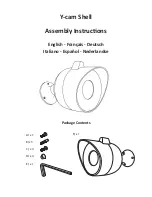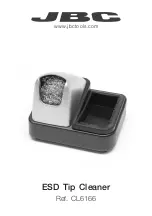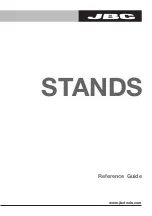
Model 70275 Page 3
Personal and Work Area Safety (continued)
F.
While assembling and using the Carri-
er keep work area clean and well lighted.
Keep spectators and children out of the
work area.
3.
Use of the Carrier
A.
The Carrier must be attached to a 2”
x 2” Class II, III or IV hitch receiver.
The
hitch must be properly installed by a quali-
support the weight of this Carrier and its
contents (500 Lbs. capacity).
B. This Carrier is designed to transport mo-
bility wheelchairs and scooters, snow blow-
ers, lawn and garden equipment and similar
cargo.
Do not modify the Carrier and do
not use this product for purposes that it
was not designed for.
C.
Never exceed the maximum weight
capacity of 500 Lbs.
D.
Be aware of the danger of “dynamic
loading”
. This situation arises when a load
is dropped onto the Carrier, resulting in a
short term excessive load. Dynamic loading
can result in damage and failure of the Car-
rier and/or hitch receiver, and personal injury
to the person loading the Carrier.
E.
Never load people or animals into the
Carrier
. Keep children and spectators well
clear when loading and using this product.
F.
Adhere to all Department of Transpor-
tation (D.O.T.) requirements when using
this product
. Use ropes and tie downs to
securely hold all cargo in place.
G. For the vehicle that will support the Car-
rier, read all pertinent vehicle instructions
and warnings provided in the owner’s manu-
al.
Make sure the vehicle’s engine is OFF,
with parking brake set, before loading or
unloading the Carrier.
H.
Note the position of the vehicle’s ex-
haust pipes before setting up the Carrier.
Make sure exhaust pipes are not in close
from exhaust. If this risk exists on your ve-
hicle, do not use the Carrier.
I.
Never ride in the equipment being load-
ed or unloaded into the Carrier.
Slowly roll
the equipment into and out of the Carrier per
the equipment manufacturer’s instructions.
Maneuvering a heavy wheelchair or other
piece of equipment up and down the
Ramp can be strenuous and dangerous.
This should only be done by individu-
als who are physically able to handle the
demands of this task.
J.
Make sure that the front edge of the
before attempting to load and unload the
Carrier.
K.
The horiontal bottom side of Carrier
should not be higher than 14” from the
bottom of Ramp.
Any attempt to use the
Ramp to load an object more than this 14”
vertical height is not safe.
L.
DO NOT USE on receiver hitches that
are less than 12” from the ground without
using properly rated hitch riser.
M.
Once Carrier is loaded, Ramp must
be in upright position and locked in place
with U-Pins (6) and R-Pins (5).
N.
With Carrier attached to vehicle, never
exceed 55 MPH vehicle speed
. Adhere to
all state and local vehicle regulations per-
taining to the use of carrier devices.

























